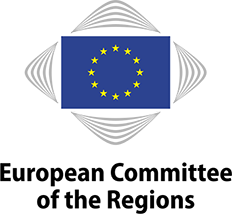
How much do you know about the regions of the European Union? The editors of the Eurostat Regional Yearbook will give fascinating insights into the lives of 447 million people in the EU, covering a variety of topics from demography and education to the labour market. The speakers will use interactive visuals to show how the regions are coping with the green and digital transition. There will be a brief quizz during the talk.
- Territorial | Local and regional | EU/ European | Neighbours (ENI + IPA + EFTA + UK) | Climate and environment | Cohesion | Demographics (depopulation and ageing) | Tourism and Heritage
- Code: 12TK23124
Speaker

Practical information
- When
-
Thu 12/10/2023, 11:30 - 11:45 CET
- Format
- EU Regions Talks
- Theme
-
Regions in post-industrial transition
- Language
- English
- Website
-
https://ec.europa.eu/eurostat
- Social media
-
@EurostatStatistics
@EU_Eurostat
@Eurostat
@eu_eurostat

Partner
Document
Reporting
Session summary
Teodora Brandmüller from Eurostat (unit E.4) talked about 5 maps from the latest Eurostat regional yearbook and the Regions in Europe 2023 interactive edition. The European Commission announced 2023 as the European Year of Skills. In connection to this initiative Teodora presented the map of highly skilled people by NUTS 2 regions, and parallel to this a map on the Net primary income per inhabitant. She pointed out in which regions they correlate.
Recovery in tourism was analyzed next: how regions mainly relying on foreign tourism were hit the most by COVID-19 restrictions, and how slowly they are recovering, while regions that are mostly domestic tourist destinations did not experience a huge fall.
Finally, she showed a map at different geographic levels for GDP (in PPS) per inhabitant pointing out that national figures cannot reveal the significant differences, the diversities within one country. In most of the countries there is a pattern with a capital region’s dominance, but in a few cases we see more major hubs for business activity.
Quotes
-
In the 50’s military plane seats were designed using the average dimension of pilots, but it turned out none of the pilots would fit these seats. As a result, adjustable seats were invented. The situation is similar with the regions in EU.
Additional links
https://ec.europa.eu/eurostat/web/interactive-publications/regions-2023#economy
https://ec.europa.eu/eurostat/web/products-flagship-publications/w/ks-ha-23-001




